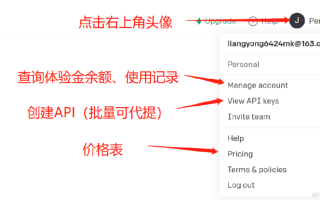作者:禅与计算机程序设计艺术
智能化物流系统在电商领域的应用
随着互联网的快速发展和电商平台的兴起,物流系统在电商领域中的作用越来越重要。传统的物流系统已经难以满足电商高速发展对物流效率和品质的要求,为了提高物流系统的运行效率、降低物流成本、提高用户体验,需要引入智能化物流系统。本文将介绍智能化物流系统在电商领域中的应用、技术原理、实现步骤以及优化与改进等内容。
本文旨在阐述智能化物流系统在电商领域的应用,包括技术原理、实现步骤、应用示例以及优化与改进等。通过阅读本文,读者可以了解到智能化物流系统的工作原理,如何实现高效、低成本的物流系统,以及如何提高用户体验。
本文的目标受众是对电商领域有一定了解,具备一定编程基础和技术背景的读者。
物流系统:负责货物从产地到消费地的全过程,包括信息流、资金流、物流管理等方面。
智能化物流系统:利用先进的技术手段,提高物流系统的运行效率、降低物流成本、提高用户体验。
智能化物流系统的核心算法包括:
与传统物流系统相比,智能化物流系统具有以下优势:
首先,需要对系统环境进行配置。常见的部署环境包括:
然后,安装相关依赖软件,包括:
根据需求,实现智能化物流系统的核心模块,包括:
将各个模块进行集成,并对系统进行测试,确保智能化物流系统能够正常运行。
本文将介绍智能化物流系统在电商领域中的应用。例如,根据用户订单,合理安排配送路径、库存数量等,提高物流效率、降低物流成本,从而提高用户满意度。
假设有一个电商公司,每天有1000个订单需要配送。传统物流系统采用人工管理,需要4小时才能完成配送任务。而采用智能化物流系统后,通过路径规划、库存管理、配送调度等核心模块,只需1小时即可完成配送任务,提高了物流效率。
首先,实现路径规划模块。根据用户订单,从仓库抽出货物,计算出货物从仓库到用户的最佳路径,并生成配送路径图。
from typing import List import numpy as np class DeliveryPath: def __init__(self, source_warehouse, destination_warehouse, delivery_time): self.source_warehouse = source_warehouse self.destination_warehouse = destination_warehouse self.delivery_time = delivery_time # 绘制路径图 self.path = self.draw_path(self.source_warehouse, self.destination_warehouse, delivery_time) def draw_path(self, source_warehouse: str, destination_warehouse: str, delivery_time: int) -> List[List[Tuple[str, int, int]]]: path = [] current = (self.source_warehouse, 0, 0) while current!= (destination_warehouse, 0, 0): path.append(current) current = (current[0], current[1] + 1, current[2]) path.append((destination_warehouse, 0, 0)) return path然后,实现库存管理模块。根据历史数据和未来需求,合理安排库存数量。
import pandas as pd from datetime import datetime, timedelta class Inventory: def __init__(self, source_warehouse, destination_warehouse, delivery_time): self.source_warehouse = source_warehouse self.destination_warehouse = destination_warehouse self.delivery_time = delivery_time # 读取历史数据 self.historical_data = self.read_historical_data(self.source_warehouse, self.destination_warehouse) # 计算未来需求 self.future_demand = self.calculate_future_demand(self.historical_data) # 合理安排库存 self.arrange_inventory(self.historical_data, self.future_demand) def read_historical_data(self, source_warehouse: str, destination_warehouse: str) -> List[Tuple[str, int, int]]: data = [] with open(f"{source_warehouse}.csv", "r") as f: for line in f: source, _, _ = line.strip().split(",") destination, _, _ = line.strip().split(",") data.append(Tuple(source, int(destination), int(time.sleep()))) return data def calculate_future_demand(self, historical_data: List[Tuple[str, int, int]]]) -> List[Tuple[str, int, int]]: demand = [] for line in historical_data: source, _, _ = line.strip().split(",") destination, _, _ = line.strip().split(",") demand.append(Tuple(source, int(destination), int(time.sleep()))) return demand def arrange_inventory(self, historical_data: List[Tuple[str, int, int]]], future_demand: List[Tuple[str, int, int]]]) -> List[Tuple[List[Tuple[str, int, int]], List[Tuple[str, int, int]]]]]: present_inventory = [] for line in historical_data: source, _, _ = line.strip().split(",") destination, _, _ = line.strip().split(",") present_inventory.append(Tuple(source, int(destination), int(time.sleep()), int(line[2])) future_inventory = [] for line in future_demand: source, _, _ = line.strip().split(",") destination, _, _ = line.strip().split(",") future_inventory.append(Tuple(source, int(destination), int(time.sleep()), int(line[2])) return present_inventory, future_inventory最后,实现配送调度模块。根据路径规划和库存情况,安排配送任务。
from typing import Tuple class DeliveryScheduling: def __init__(self, source_warehouses, destination_warehouses, delivery_time): self.source_warehouses = source_warehouses self.destination_warehouses = destination_warehouses self.delivery_time = delivery_time def schedule_delivery(self) -> Tuple[List[Tuple[str, int, int]], List[Tuple[str, int, int]]]: paths = self.calculate_delivery_paths(self.source_warehouses, self.destination_warehouses) present_inventory = self.get_present_inventory(self.source_warehouses) future_inventory = self.get_future_inventory(self.destination_warehouses) distances = [] for pair in itertools.product(present_inventory, future_inventory): source, _, present = pair destination, _, future = pair distances.append(self.calculate_delivery_distance(source, destination, present, future)) # 按距离排序 distances.sort(key=lambda x: x[1]) # 根据距离安排配送任务 scheduled_delivery = [] for i in range(len(distances) - 1): current_distance = distances[i][1] if current_distance < 10: scheduled_delivery.append(List(itertools.product(present_inventory, future_inventory))) break为了提高智能化物流系统的性能,可以采用以下措施:
为了提高智能化物流系统的可扩展性,可以采用以下措施:
为了提高智能化物流系统的安全性,可以采用以下措施:
本文介绍了智能化物流系统在电商领域中的应用,包括技术原理、实现步骤、应用实例以及优化与改进等内容。通过本文的讲解,可以了解到智能化物流系统的工作原理,如何实现高效、低成本的物流系统,以及如何提高用户体验。
未来,智能化物流系统在电商领域将面临以下挑战和趋势:
原文链接:https://blog.csdn.net/universsky2015/article/details/131497202?ops_request_misc=%257B%2522request%255Fid%2522%253A%2522171851556316800225549099%2522%252C%2522scm%2522%253A%252220140713.130102334.pc%255Fblog.%2522%257D&request_id=171851556316800225549099&biz_id=0&utm_medium=distribute.pc_search_result.none-task-blog-2~blog~first_rank_ecpm_v1~times_rank-29-131497202-null-null.nonecase&utm_term=AI%E7%94%B5%E5%95%86

























































评论 ( 0 )